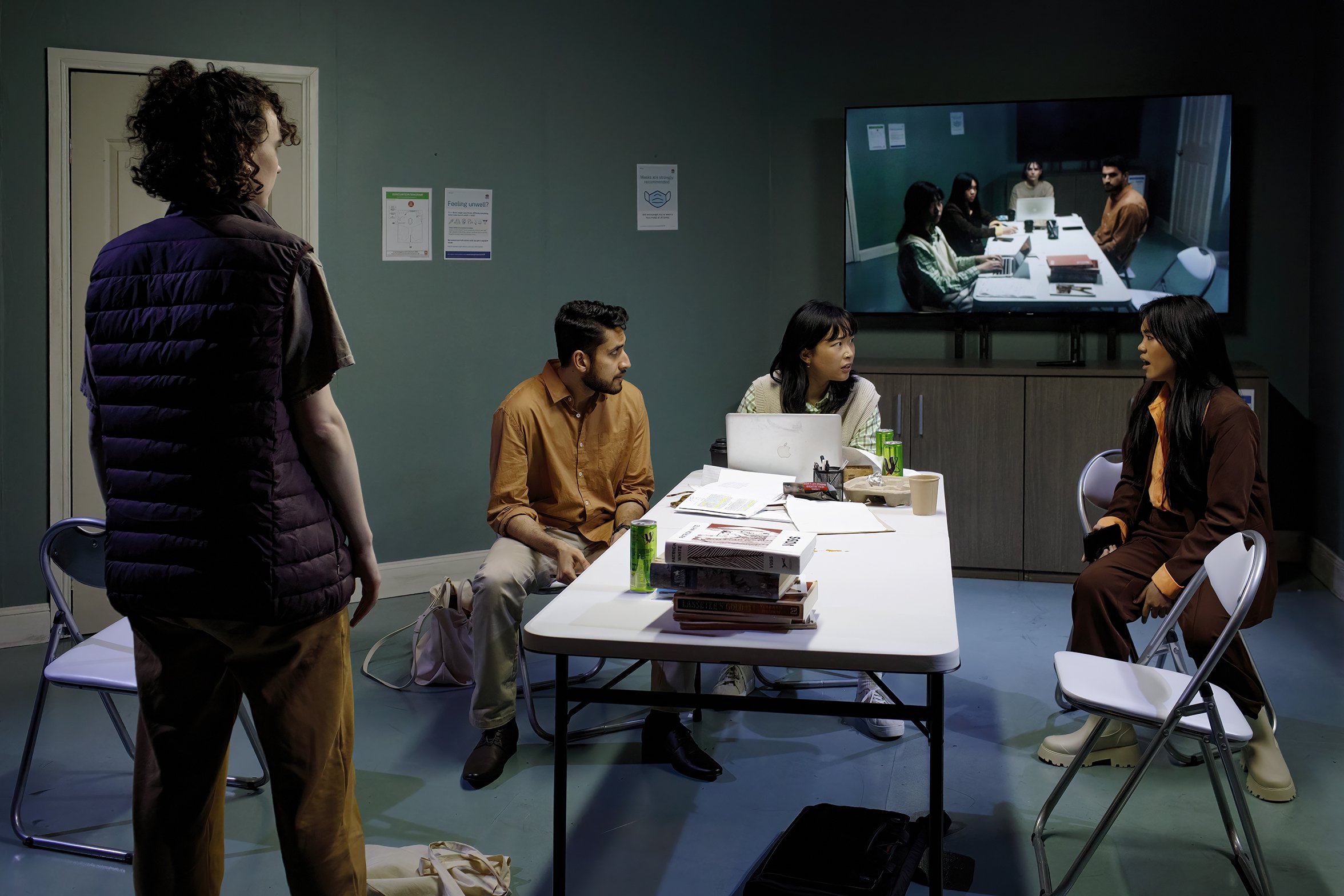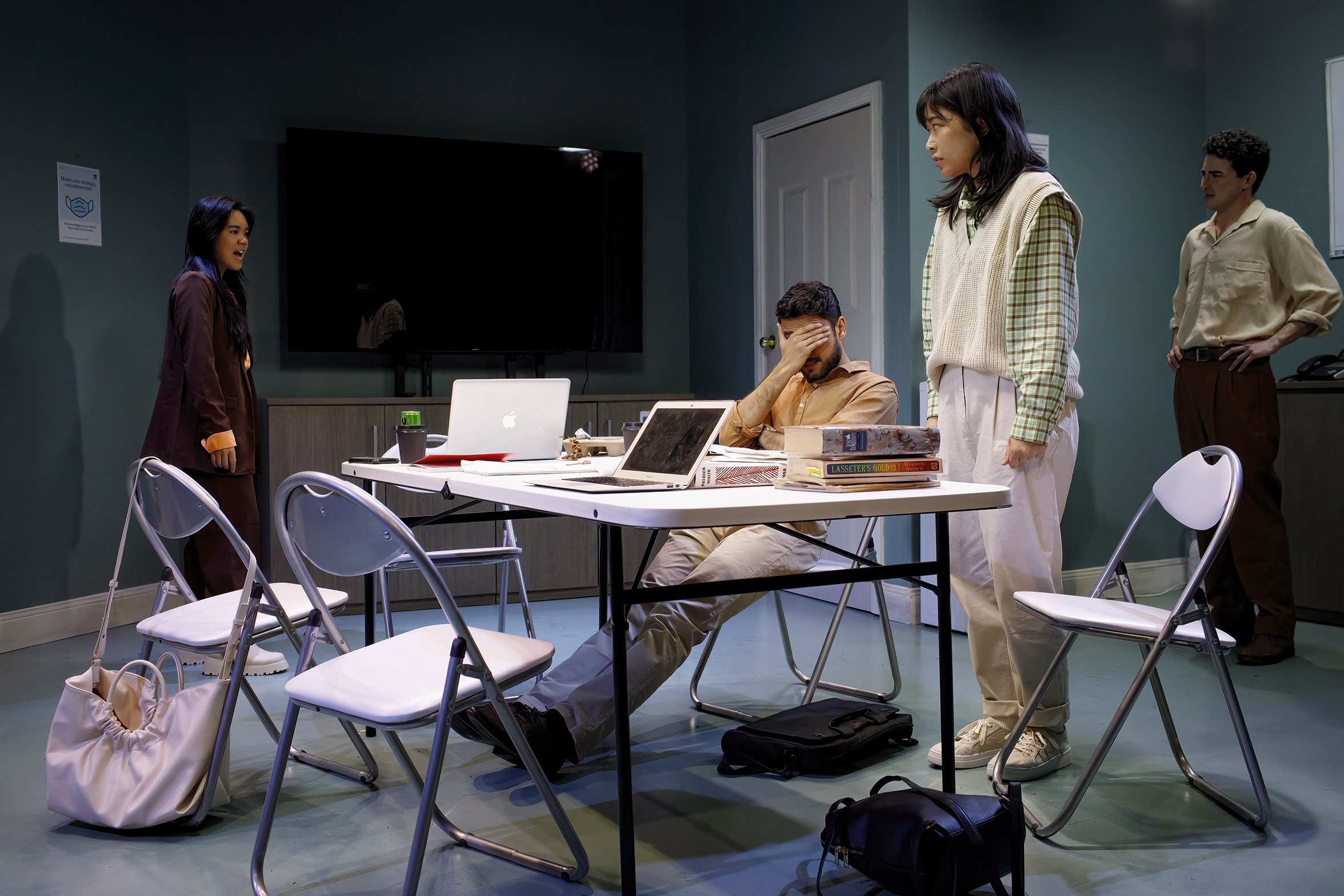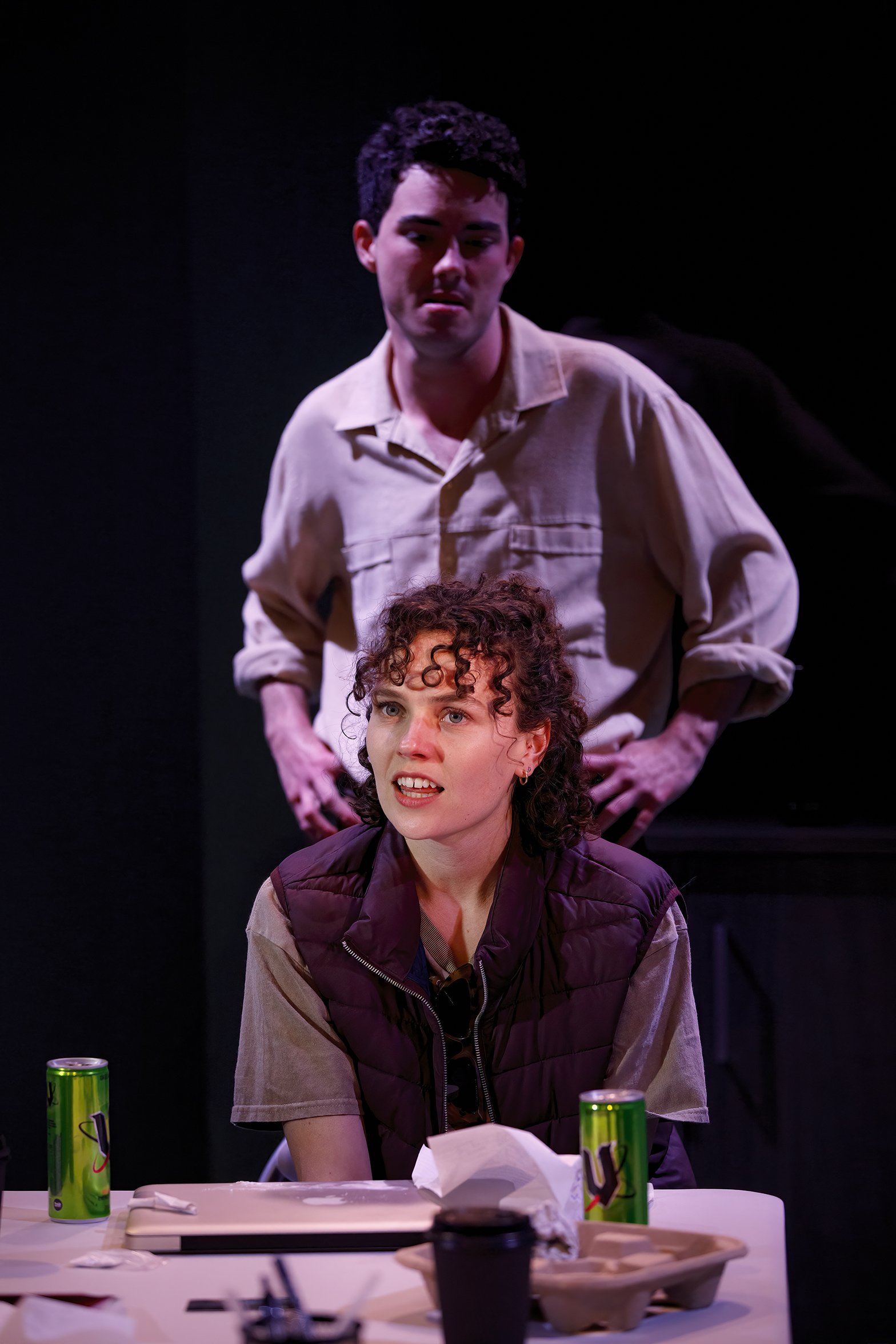Review: The Great Australian Play is a puzzle and a half
Written by Kim Ho, Directed by Saro Lusty-Cavallari
Review by Charlotte Smee
Full disclosure: The Great Australian Play made me feel stupid. Luckily for you, I keep regular appointments with my therapist and can recognise that feeling stupid is not necessarily a bad thing. Feeling stupid can, in fact, be a natural consequence of doing something outside of your comfort zone or learning something new. It can also be a natural consequence of someone speaking to you in a condescending way or telling you a story with parts missing. Sometimes, feeling stupid can be the result of a combination of all of the above.
Spoilers ahead!
The first 70 minutes of the play were unusual, but kept to a straightforward structure. We opened on “Dem” (Kurt Pimblett) monologuing as Harold Bell Lasseter. He explained that in either 1897 or 1911 he got lost in the central Australian desert and discovered a reef of gold. He then tried to recruit us to go and rediscover the gold. It’s one of those legends you can imagine someone’s white Australian Dad being fascinated by, drawn in by the promise of gold and conveniently ignoring that the concept of a white “explorer” erases a whole chunk of Australia’s first history and culture. The spotlight on Lasseter’s face snapped to a bright white wash of the stage, and then we were in the world of the commercial screenwriter trying to create the next Australian TV classic about Lasseter.
Tensions between jaded TV writers Geb (Lucinda Howes) and Eli (Idam Sondhi), successful playwright Cal (Mây Trần) and nepotism baby Ash (Rachel Seeto) made for some frustratingly realistic conversations about commercialism and art. The sparks and fights between them accurately portrayed the painful process of trying to meet everyone’s interests when making something new, successful and yet steeped in problematic tradition — a tale as old as time, really. Video and sound design by Saro Lusty-Cavallari gave a manic sense of this Australian tradition with mash-ups of Australia, Tracks, Mad Max and other more obscure references to our very white, very colonial, very dusty stories. Ever present behind all of this was Dem/Lasseter, drawing out spotlight-ed monologuing from various characters and keeping them on track to rebuild and rewrite.
Odd moments in this first half included cameo appearances from Shari Sebbens giving advice on how to portray “the tracker” character in the story as something other than a token of Aboriginality, and from the playwright themself Kim Ho. They warn the screenwriters to stay far away from this story, having already tried (and failed?) to recreate it in a play called Dream Millions. Dream Millions, of course, refers to Ho’s earlier draft of The Great Australian Play, which played in 2020 at TheatreWorks, St Kilda. This substantially different version received a slew of scathing reviews, one of which appears slightly altered in the program for this show, describing it as a “failed experiment”.
During the interval, across from the bar at the Old Fitz, my friend Grace (lover of Australiana and fellow country bumpkin) and I sat on a couch and gushed about how funny the first half of the play had been. We wondered what exactly the point was, but trusted that it might get somewhere in the end. Then, we were greeted by a similar set to the opening — but all in browns, faded photographs, and floral serving dishes (thanks to Kate Beere). The weird world of Lasseter the ghost/puppet master/legend had become the setting for a “Sydney Theatre Company production” of a play referred to in the first act, and lauded as new, great and Australian.
Here's where it got weirder. In the second act, Ho creates a patchwork of a play made up of parts of “great Australian plays”. As someone who diligently studied HSC drama in Australia (‘scuse the French) this was pretty fucking eerie. Echoes of Summer of the Seventeenth Doll, Away, The Golden Age, The Removalists, and others compete for attention accompanied by red and blue siren lights and loud club music. It starts to repeat itself in the attempt to remake itself, featuring Howes with a face full of blood and — this might be the key — a small golden box that no one can open no matter how hard they try. The throughline, it seems, was that the four screenwriters had become a colonial Australian family waiting for the real Lasseter’s return, and all they got was this spectre of Lasseter telling them how to react and where to go. In the final moments, the scary faceless man dressed in a Driza-Bone returns, reveals himself as Lasseter, and takes the mother in the story (also the playwright in the first half) away after she delivers her monologue about “the Yammering Man” that had featured in video form at the beginning of the play.
Saro Lusty-Cavallari as director, story-assistant, sound designer and video designer is just as wrapped up in this strangeness as Ho is. In his director’s note, he says:
I don’t think there’s much more either of us can say about this work anymore. We could ‘explain it’ and ruin the mystery at its heart or we could smother it in sociopolitical babble that would make us feel clever and enrich your enjoyment very little.
This is fairly telling. Lusty-Cavallari is great at drawing out the chaos in Ho’s writing, accompanying it with sound and video hints and suitably strange performances from the actors, but there is a secret here that even he doesn’t want to let us in on.
Here feels like a good time to lament the responsibilities of a critic. I hate to quote a Disney movie in the midst of all this pretentious quoting of Australian stories, but here we go:
In many ways, the work of a critic is easy. We risk very little yet enjoy a position over those who offer up their work and themselves to our judgement. We thrive on negative criticism, which is fun to write and to read. But the bitter truth we critics must face, is that in the grand scheme of things, the average piece of junk is probably more meaningful than our criticism designating it so.
I don’t entirely agree with this statement, but I think it is illustrative of something. We have this idea of critics as incredibly qualified, snobby, usually white, and as people who enjoy putting others down. I want to challenge this idea (that’s another story for another time), and I think this experience of reviewing The Great Australian Play has taught me something really important about nuance. Just because I don’t understand something, doesn’t mean it’s bad. At the same time, if I don’t understand something, it may be a sign that there has not been enough consideration or care for me as an audience member. This is why I struggle with the concept of giving stars in reviews. It’s pretty fucking difficult to reckon with so many ideas and the possibility of so many audiences, then sit down and reduce them to a number. Out of five, of all numbers.
I don’t want to label this play as a failure. I don’t know if it’s a success either. This is a brave, even extra brave, attempt to re-work something that someone did label as a failure into something completely different. Kim Ho is clearly so obsessed with this complex, huge, and terrifying idea of Australia’s entire dramatic history as a glorification of colonial times and characters, that they must write about it. Saro Lusty-Cavallari was understandably excited about this obsession, and has lived in the world of this play since its inception. The only thing I ask from you, Kim and Saro, is a bit more hand-holding. Tell me one thing at once, and let me stew in the freakiness of the specific moment you want to tell me about, because I promise I want to understand. I’m just feeling somewhat left behind.
And to you, dear reader, I encourage you to go and get lost in The Great Australian Play because it does something very cool that mainstage theatre cannot: be unapologetically weird. Definitely read up on your Australian dramatic history first, then give me a call and help me figure out the key to the puzzle. Is it the small golden box? Or is it the feeling of being lost? Or is it just the experience of fruitlessly trying to tell stories over and over again until someone listens?
The Great Australian Play plays at the Old Fitz until 8 October.
Find the program and appendices to the show here. Tickets are here.
Images by Phil Erbacher
Charlotte Smee is a little enby, a big mess and the editor of Kaleidoscope Arts Journal. Their friends often worry they might overdose on theatre.
Like this review? Buy us a $5 coffee here. You can do it once, once a month or as many times as you like.





